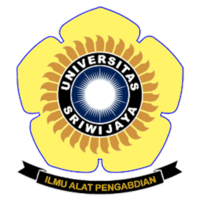Analisis Kesesuaian Lahan Untuk Pengembangan Komoditas Kakao (Theobroma Cacao L.) di Kecamatan Kuala Kampar Kabupaten Pelalawan, Provinsi Riau
Abstract
Elfiani E. 2020. Land analysis for development commodities of cocoa (Theobroma Cacao L.) in subdistrict Kuala Kampar District Pelalawan, Riau province. In: Herlinda S et al. (Eds.), Prosiding Seminar Nasional Lahan Suboptimal ke-8 Tahun 2020, Palembang 20 Oktober 2020. pp. xx. Palembang: Penerbit & Percetakan Universitas Sriwijaya (UNSRI).
In an effort to increase cocoa production optimally in an area, information on potential land resources is needed as a basis for land suitability assessment. Land suitable for the development of a commodity allows the commodity being cultivated to develop optimally and be economically profitable and the cultivation of the commodity will be sustainable. Whereas the land that is less suitable and known to be the limiting factor can be carried out improvement efforts in order to rehabilitate the land for the utilization of cultivated commodities. In the 2016 fiscal year research was carried out by the Riau Institute of Agricultural Technology (BPTP) in the Land Suitability Analysis for Commodity Development Cocoa (Theobroma cacao L.) in Teluk Meranti District, Pelalawan Regency, Riau Province with the aim of characterizing and analyzing the potential of land resources for the development of cocoa commodities and compiling a suitability map of 1: 50,000 scale cocoa commodity land. Land suitability for cocoa plants in the study area consisted of marginal conformity (S3), not suitable at present (N1) and not fixed accordingly (N2). Appropriate land and directed towards the development of cocoa commodities in the study area reached an area of 201,377 ha or around 31.76% of the total area of the research area which spread around 24.459 ha in Kuala Kampar District. The limiting factors for cocoa development in the study area are root media (r), nutrient retention (f), nutrient availability (n) and flood hazard (b), toxicity (x) and salinity (c).
In an effort to increase cocoa production optimally in an area, information on potential land resources is needed as a basis for land suitability assessment. Land suitable for the development of a commodity allows the commodity being cultivated to develop optimally and be economically profitable and the cultivation of the commodity will be sustainable. Whereas the land that is less suitable and known to be the limiting factor can be carried out improvement efforts in order to rehabilitate the land for the utilization of cultivated commodities. In the 2016 fiscal year research was carried out by the Riau Institute of Agricultural Technology (BPTP) in the Land Suitability Analysis for Commodity Development Cocoa (Theobroma cacao L.) in Teluk Meranti District, Pelalawan Regency, Riau Province with the aim of characterizing and analyzing the potential of land resources for the development of cocoa commodities and compiling a suitability map of 1: 50,000 scale cocoa commodity land. Land suitability for cocoa plants in the study area consisted of marginal conformity (S3), not suitable at present (N1) and not fixed accordingly (N2). Appropriate land and directed towards the development of cocoa commodities in the study area reached an area of 201,377 ha or around 31.76% of the total area of the research area which spread around 24.459 ha in Kuala Kampar District. The limiting factors for cocoa development in the study area are root media (r), nutrient retention (f), nutrient availability (n) and flood hazard (b), toxicity (x) and salinity (c).
Keywords
cocoa, kuala kampar, land suitable
Full Text:
PDFArticle Metrics
Abstract view : 429 timesPDF - 514 times
Refbacks
- There are currently no refbacks.

